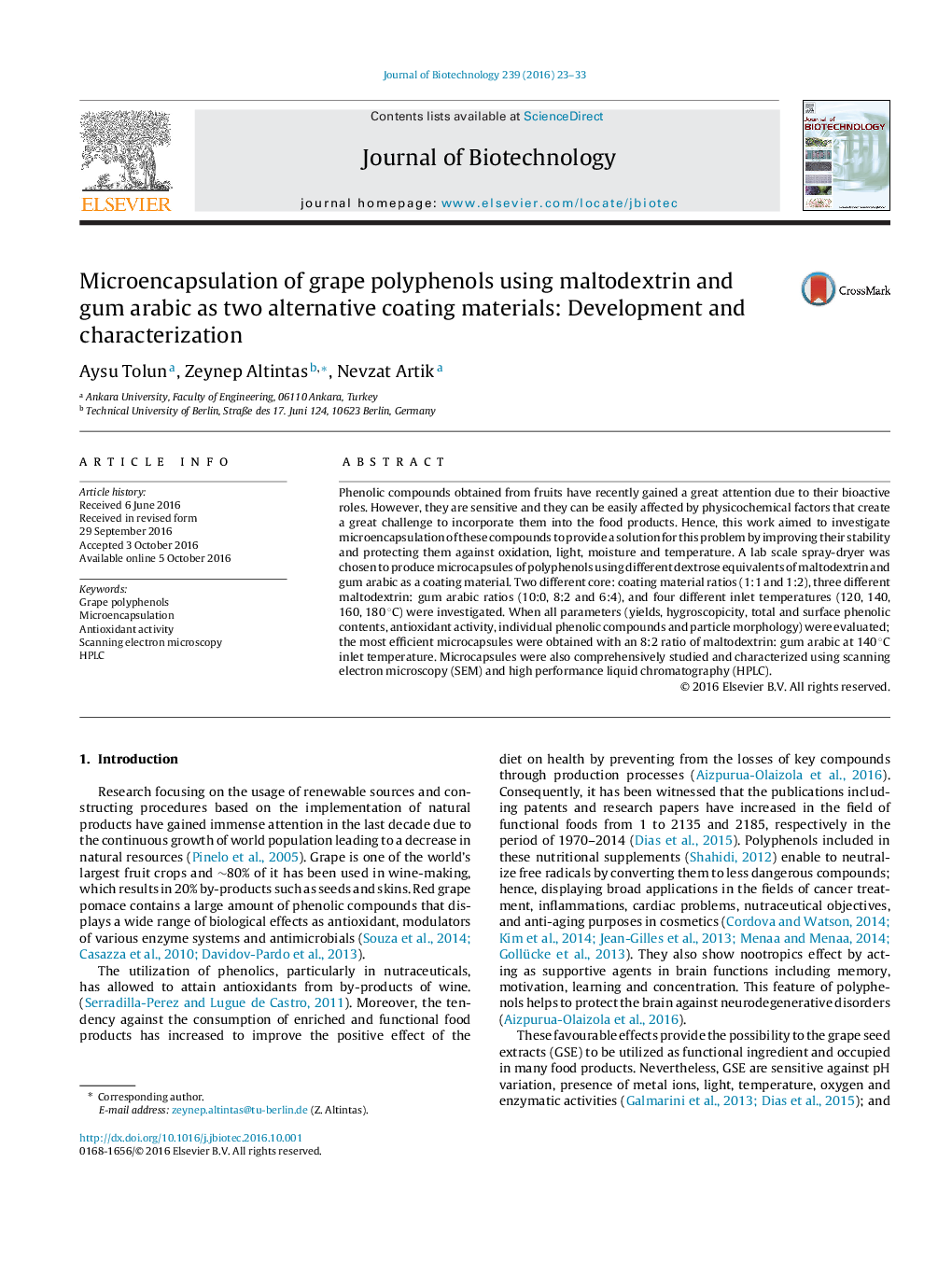| Article ID | Journal | Published Year | Pages | File Type |
|---|---|---|---|---|
| 6452257 | Journal of Biotechnology | 2016 | 11 Pages |
â¢Polyphenols that have important bioactive roles are sensitive against physicochemical factors.â¢Their appropriate encapsulations have an immense impact in industry and health sector.â¢Analytical tools (SEM, HPLC and UV/vis spectrometry) were employed to determine optimum microencapsulation (ME) conditions.â¢The developed ME method has shown superiority over the existing techniques.â¢This novel technique can convert environmentally hazardous by-products into value-added products.
Phenolic compounds obtained from fruits have recently gained a great attention due to their bioactive roles. However, they are sensitive and they can be easily affected by physicochemical factors that create a great challenge to incorporate them into the food products. Hence, this work aimed to investigate microencapsulation of these compounds to provide a solution for this problem by improving their stability and protecting them against oxidation, light, moisture and temperature. A lab scale spray-dryer was chosen to produce microcapsules of polyphenols using different dextrose equivalents of maltodextrin and gum arabic as a coating material. Two different core: coating material ratios (1:1 and 1:2), three different maltodextrin: gum arabic ratios (10:0, 8:2 and 6:4), and four different inlet temperatures (120, 140, 160, 180 °C) were investigated. When all parameters (yields, hygroscopicity, total and surface phenolic contents, antioxidant activity, individual phenolic compounds and particle morphology) were evaluated; the most efficient microcapsules were obtained with an 8:2 ratio of maltodextrin: gum arabic at 140 °C inlet temperature. Microcapsules were also comprehensively studied and characterized using scanning electron microscopy (SEM) and high performance liquid chromatography (HPLC).
Graphical abstractDownload high-res image (161KB)Download full-size image
